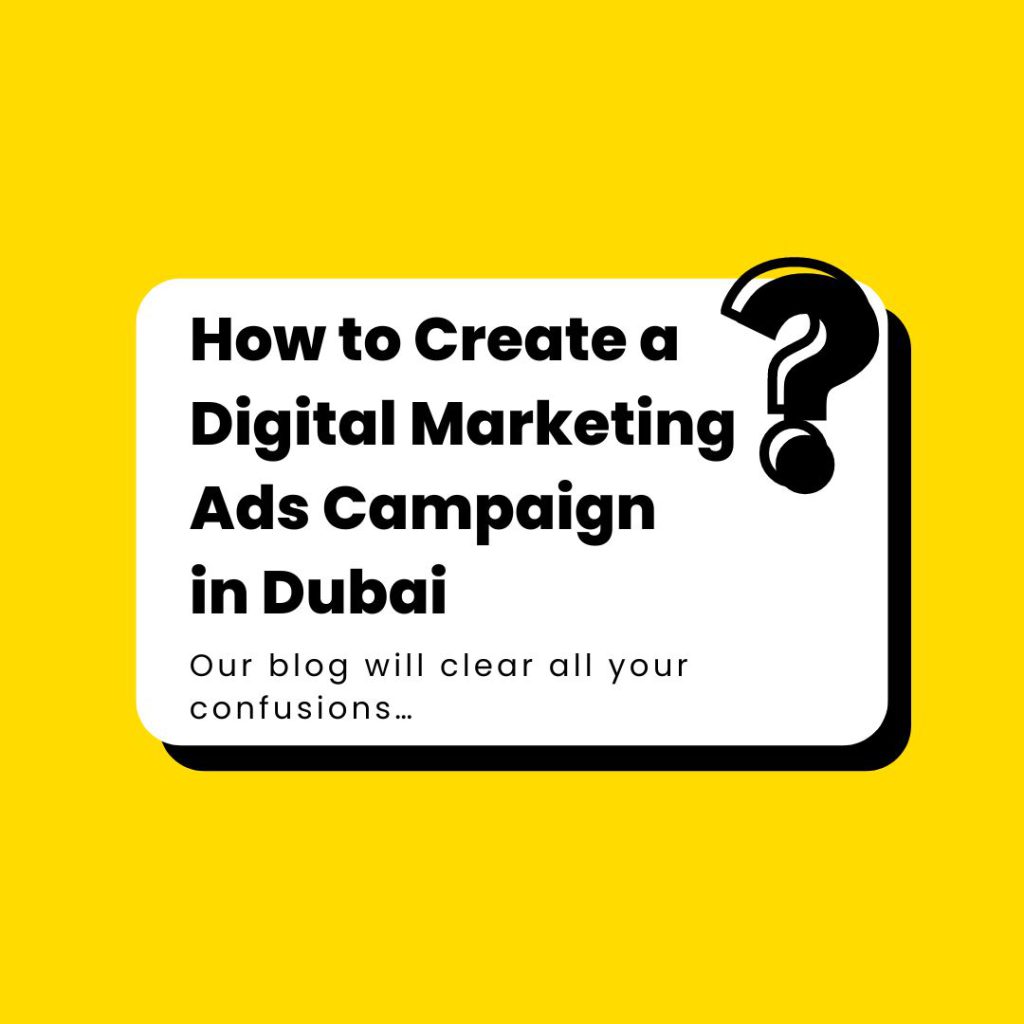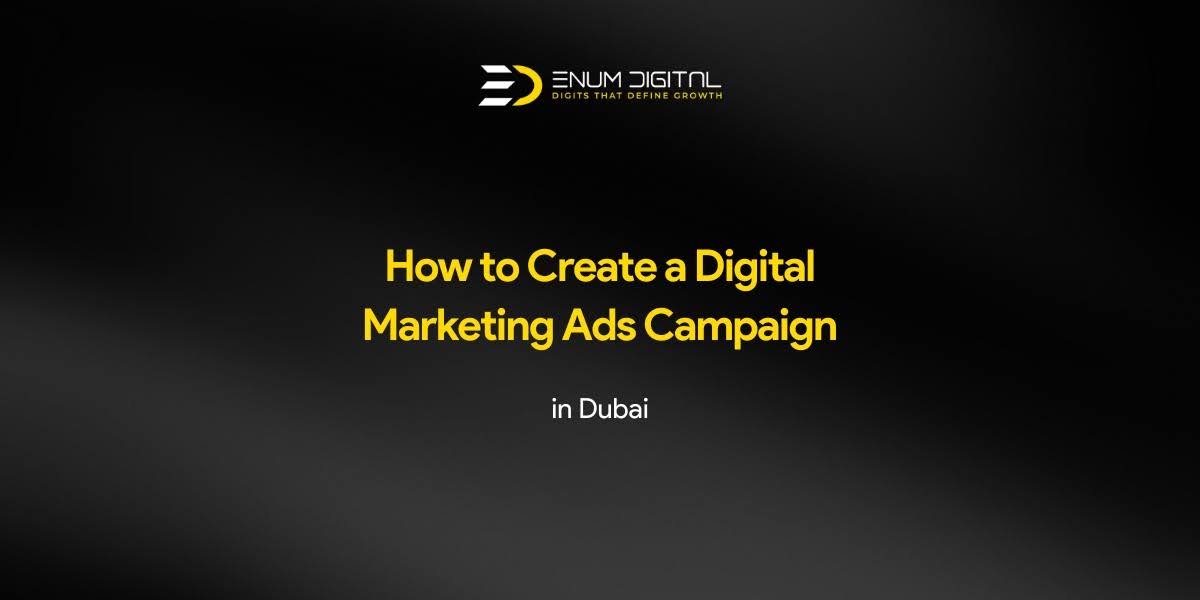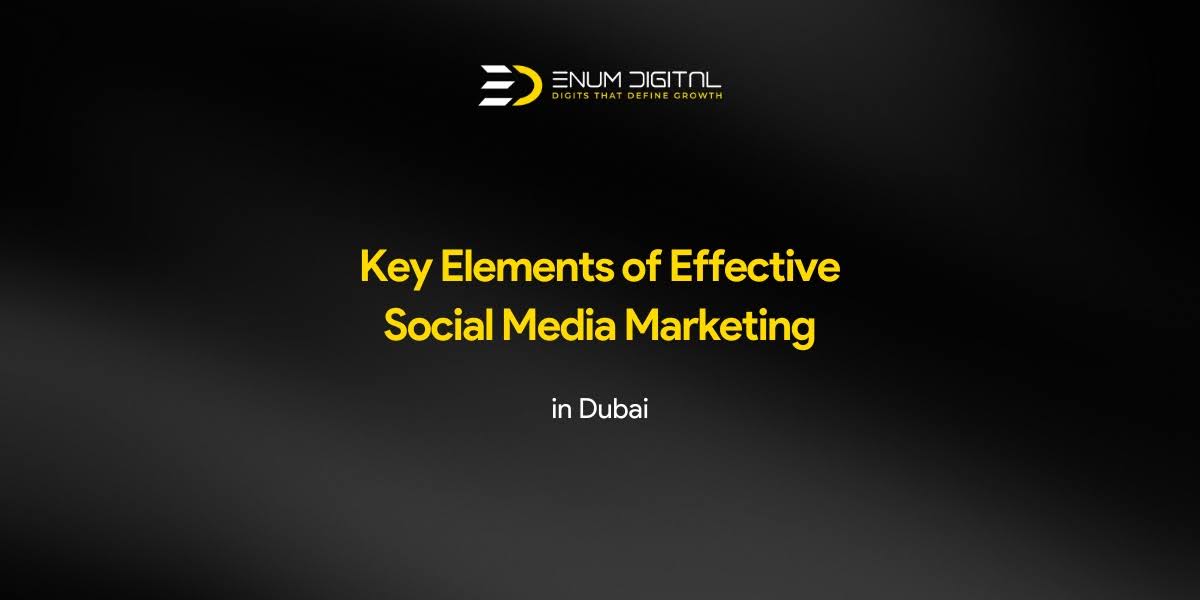Running a digital marketing campaign in Dubai can be made simple by following a structured approach. Here’s a guide to help you get started:

1. Define Your Goals
Start by deciding what you want to achieve. Whether it’s boosting traffic, generating leads, or increasing sales, knowing your objective will guide your strategy.
Examples of goals:
- Grow brand awareness
- Increase website traffic
- Drive more sales
Set measurable targets, like gaining 1,000 website visits or 500 new email subscribers in a month. The more specific your goals, the easier it will be to track success.
2. Know Your Audience
Understanding your target audience is crucial. Consider who you’re trying to reach and what they care about. For instance, are they young professionals, parents, or small business owners?
To do this, create a customer profile. This profile includes basic details like age, job, and location but also covers their online habits. What do they like to do? What challenges do they face?
Use tools like Google Analytics to pull insights from your website visitors, such as their age, gender, and the devices they use. This helps tailor your campaign to suit your audience.
3. Do Keyword Research
Keywords are the search terms your audience uses to find products or services. To create effective ads, you need to know which keywords are relevant to your campaign.
Start by brainstorming potential keywords that match your product or service. Then, use tools like Google Keyword Planner to check how popular these keywords are and how much competition they face.
For example, if you’re selling eco-friendly shoes, keywords could be “sustainable shoes” or “environmentally friendly footwear.” Include these in your SEO strategy or paid ads.
4. Study Your Competitors
Understanding what your competitors are doing can give you an edge. Analyze their strategies, such as their ad types, messaging, and the platforms they use.
Questions to ask:
- What channels are they using (social media, Google Ads, etc.)?
- How are they pricing their products or services?
- What are their strengths and weaknesses?
Use tools like Semrush to discover their top-performing keywords and strategies. You can replicate their successful tactics while improving on the areas where they fall short.
5. Choose the Right Platforms
Pick the best digital marketing channels based on your goals. Each platform has its strengths. For example:
- SEO: Ideal for improving organic search results.
- PPC (Pay-Per-Click): Brings quick traffic through ads.
- Social Media: Best for engaging directly with customers and building brand awareness.
If you’re starting, focus on one or two channels. As your campaign grows, you can expand to other platforms.
6. Set a Budget
A solid budget is key. Make sure to allocate enough funds to each part of your campaign, including ads, content creation, and any tools you might need.
For example, you can set aside $200 for Google Ads, $150 for Facebook Ads, and $50 for testing different ad creatives. This allows you to experiment with what works without spending too much upfront.
7. Create a Content Plan
Content is at the heart of any campaign. Whether you’re writing blog posts, designing social media ads, or producing videos, your content should align with your goals and audience.
If you aim to increase website traffic, writing optimized blog posts can be effective. For a social media-focused campaign, create eye-catching visuals and short, engaging videos.
Be prepared to adjust and refine your content based on performance.
8. Build a Campaign Plan
Create a timeline for your campaign. Set clear milestones for when each task should be completed, such as keyword research, ad design, or landing page creation.
This will help keep the campaign on track and ensure everyone involved knows what they need to do and by when.
9. Launch the Campaign
Once everything is ready, launch your campaign. If you’re using paid ads, start with a smaller budget to test your strategy. For example, if you plan to spend $100 a day on Facebook ads, begin with $50 to gather initial data.
This approach allows you to adjust before fully committing your budget.
10. Track and Adjust
Once your campaign is live, monitor its performance. Keep an eye on metrics like traffic, conversions, and click-through rates. This will help you understand what’s working and what isn’t.
For example, if you notice low conversion rates, check if the landing page needs improvement. If some ads perform better than others, shift your budget towards them.
Over time, refine your campaigns to get better results.
Final Words
By following these steps, you’ll be able to create a clear, effective digital marketing campaign in dubai that aligns with your goals and connects with your audience. Remember to start small, analyze your data, and always be ready to adapt.

Looking to launch a powerful digital marketing campaign? Let Enum Digital help you create a strategy that drives real results. From SEO to PPC and beyond, we’re here to take your business to the next level. Contact us today and start achieving your marketing goals!


